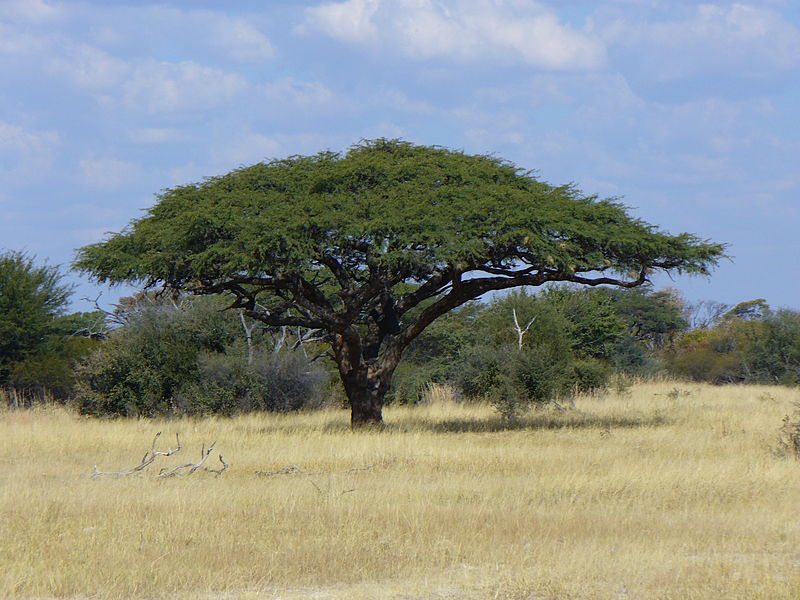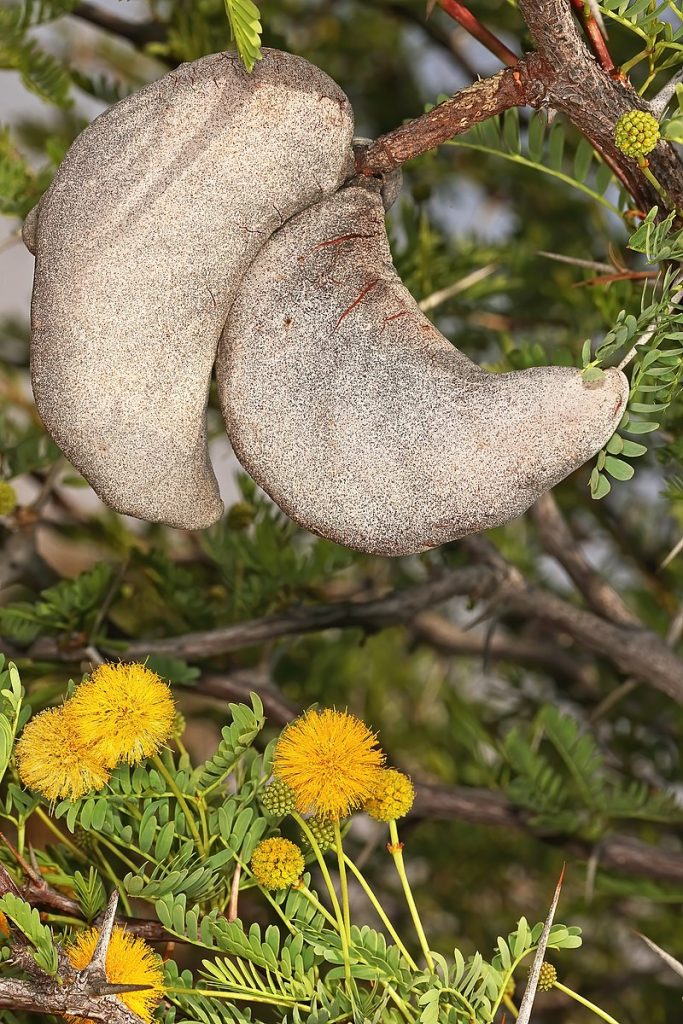
Armed with 3″ long thorns, this evergreen tree or shrub presents a great opportunity to introduce children to the unusual feeding habits of the giraffe. Yup, a giraffe can feed on this savage plant because of the unique qualities of its tongue and lips. A giraffe’s tongue can be up to 22″ long, is able to grasp objects, and is black to purple. These qualities allow the giraffe to snatch leaves from between the thorns that lie at the base of the leaves with out being pierced. And the tongue doesn’t get sunburned because it is protected by its tough blackish outer skin! No problem if the tongue get a nick from a thorn as the giraffe’s thick saliva is filled with antiseptic properties that help prevent infection. Pretty nifty! Eating the leaves of a thorny tree may seem strange but it lets the giraffes dine on the tasty, moisture-filled leaves with no competition from other animals.
The thorny trees have other interesting characteristics as well. From late winter to summer, densely packed balls of tiny, fragrant, yellow flowers with long golden stamens appear and are followed by a dry fruit that is up to 5″ long and half-moon shaped. Giraffe thorn plants are drought resistant, provide good shade, and are very picturesque in the landscape. The tree provides many useful products including edible gum, hard wood, and a coffee substitute from the seeds. Also known as camel thorn, this evergreen tree or shrub is native to the deep, dry sandy soils of southern Africa. Photo Credit Wikipedia

Type: Evergreen tree
Height: 6-65′
Bloom Color: Bright yellow
Bloom Time: Late winter into summer
Light: Full sun
Soil: Lean, sandy, well-drained, acidic
Hardiness: Zones 9-11(?)
Outstanding Selections: None available
Photo Credit: SAplants Wikimedia